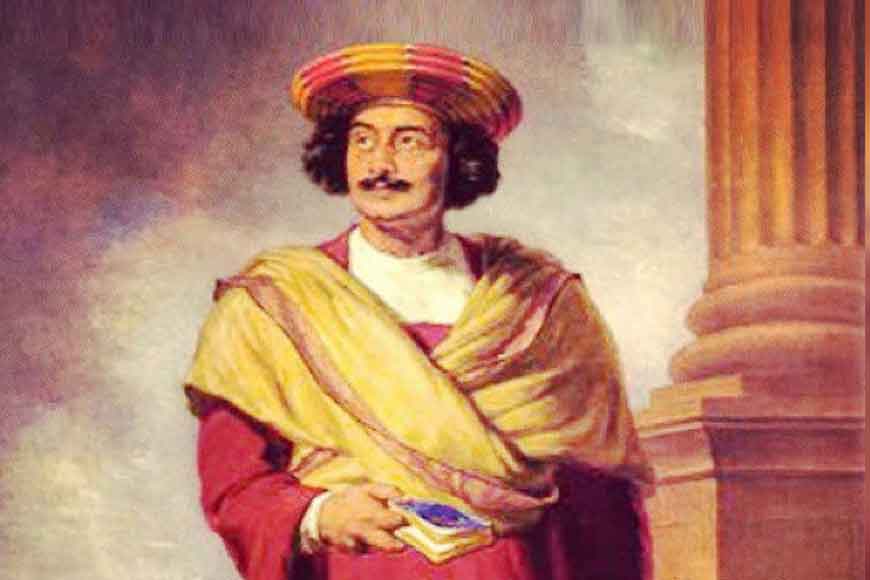Rammohan Roy, a feminist ahead of his time

While he defended Hinduism against the hostile criticism of the missionaries, he sought to purge Hinduism of the abuses that had crept into it. That was Raja Rammohan Roy in one sentence. He warmly advocated the introduction of western science and technology into the educational curriculum of India and became a pioneer of English education and enlightened journalism in this country, for he knew only education will enlighten a society that was under the terrible influence of atrocious customs directed against women.
In 1830, Rammohan Roy travelled to the United Kingdom to ensure that Lord William Bentinck’s Sati Regulation Act of 1829 banning the practice of Sati was not overturned. While in England, he also embarked on cultural exchanges, meeting with members of Parliament and publishing books on Indian economics and law.
Take for example Sati, a forceful social atrocity where young widows as young as 12 years were forced to jump on their dead husband’s pyre and perform Sati. Raja Rammohan Roy as a youngster had witnessed such a heinous scene when his own sister-in-law was forcefully burnt at the pyre of his own brother. He vowed to stop such atrocities against women. He publicly declared that he would emigrate from the British Empire if the Parliament failed to pass the Sati Abolishing Reform Bill. Sati was defined as a woman who was ‘true on her ideals.’ A pious and virtuous woman would receive the title of Sati. Sati was derived from the ancient India language term Sat, which means truth. Sati has come to signify both the act of immolation of widow and the victim, rather than its original meaning of ‘virtuous woman.’ In the Hindu mythology, Sati was the wife of Lord Shiva who consumed herself in the holy pyre. She did this is response to her father’s refusal to invite Shiva to the assembly of the Gods. She was so mortified that she invoked a yogic fire and was reduced to ashes. Self-sacrifice like that of the original sati, become a “Divine example of wifely devotion”. Raja Ram Mohan Roy was the first Indian man to protest against this custom.
In 1830, Rammohan Roy travelled to the United Kingdom to ensure that Lord William Bentinck’s Sati Regulation Act of 1829 banning the practice of Sati was not overturned. While in England, he also embarked on cultural exchanges, meeting with members of Parliament and publishing books on Indian economics and law. He founded and edited a Bengali journal called the Samvad Kaumudi, which was among the earliest Indian edited newspapers. As a pioneer of Brahmo Samaj and Bengal Rennaisance movement, Raja Rammohan Roy successfully brought in modern thoughts to the Bengali society that goes a long way even today to help women empowerment.
Rammohan Roy is a champion of women’s rights. He condemned the subjugation of women and opposed the prevailing idea that women were inferior to men in intellect or in a moral sense. He attacked polygamy, caste rigidity, and child marriage.
He was essentially a democrat and a humanist and a very well-read man. He studied oriental languages like Arabic, Persian and Sanskrit and attained proficiency in European languages like English, French, Latin, Greek and Hebrew. In his religio-philosophical social outlook, he was deeply influenced by the monotheism and anti-idolatry of Islam, deism of Sufism, the ethical teaching of Christianity, liberal and rationalist doctrines of the West. In 1803, he published a Persian treatise called Tuhfat-ul-Muwahidin or ‘A Gift to Monotheists’ wherein he explains his concept of monotheism. He was deeply concerned with the eradication of social evils like sati, child marriage, polygamy etc. Thus, he wholeheartedly supported the Governor-General Lord William Bentick when the letter enacting legislation, abolishing Sati in 1829 was passed.
For us, Rammohan Roy is a champion of women’s rights. He condemned the subjugation of women and opposed the prevailing idea that women were inferior to men in intellect or in a moral sense. He attacked polygamy, caste rigidity, and child marriage. To raise the status of women he demanded that they may be given the right of inheritance and property and he was one of the earliest propagators of modern education which he looked upon as a major instrument to spread modern ideas in the country.










